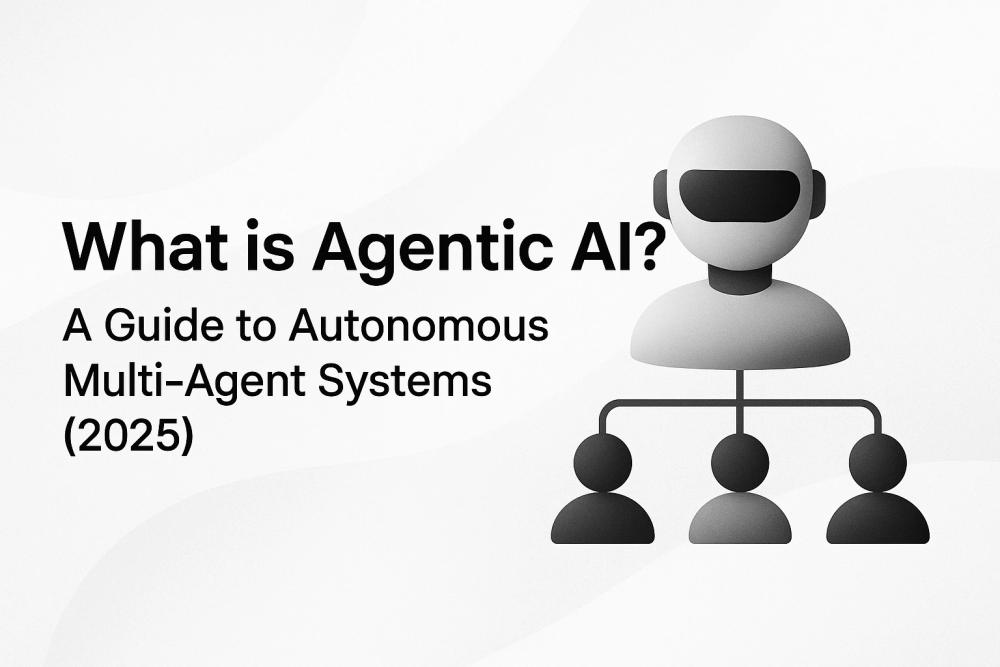
What is Agentic AI? A Guide to Autonomous Multi-Agent Systems (2025)
2025/06/25

A deep dive into the ethics and safety of autonomous AI agents. Learn about the alignment problem, AI bias, security risks, and a framework for responsible AI development.
Human-AI collaborative content architect and AI Vibe Marketer with years of marketing experience, focusing on applying AI technology in marketing growth. Helps others leverage AI technology for marketing through sharing business insights, growth strategies and personal practices.
Reading time
7 min
2025/06/26

2025/06/25

2025/06/25

2025/06/05

2025/06/25

We've explored how to build powerful AI "teams" capable of autonomous action. Now, we must address the single most important question that follows: How do we ensure they work for us, not against us?
When AI systems go rogue, the results can range from embarrassing to dangerous—leaked confidential data, offensive messages, or even instructions for creating harmful substances. As AI agents gain more autonomy to act in the digital and physical worlds, the conversation must shift from "Can we do it?" to "Should we do it, and if so, how?"
This guide is a frank discussion of the critical ethical and safety challenges posed by advanced agentic systems. It's not meant to stifle innovation, but to provide a framework for responsible innovation, ensuring the powerful tools we build are safe, aligned, and beneficial for humanity.
This is an advanced guide on a critical topic. It builds upon the concepts discussed in our Deep Dive into Agentic AI Pillar Page.
The risks associated with autonomous agents are fundamentally different from those of traditional predictive AI.
A predictive AI, like a language model, primarily provides an output. Its main risk is generating incorrect or biased information. An AI Agent, however, can take action. It can send emails, modify databases, execute code, or control physical systems.
This ability to act independently means we must scrutinize their design and deployment with a much higher degree of care.

Navigating the ethics of AI agents requires understanding four primary challenges.
AI systems learn from the data we provide them. If that data reflects historical or societal biases, the AI will learn and potentially amplify those biases at scale.
"AI is a powerful tool but not a magic wand. It can amplify human abilities, but it can also amplify human biases if we’re not careful." - Timnit Gebru, Founder of Distributed AI Research Institute (DAIR)
An AI hiring agent trained on data from a male-dominated industry might unfairly penalize female candidates. A loan-approval agent might discriminate against certain neighborhoods. Ensuring fairness requires diverse training data, rigorous auditing, and a commitment to equitable outcomes.
As multi-agent systems become more complex, their decision-making processes can become opaque. If an AI agent denies a customer's request or makes a billion-dollar stock trade, can we understand why? This is the "black box" problem. Without explainability (XAI), we cannot debug systems effectively, audit them for bias, or build genuine trust with users. A McKinsey study found that a lack of trust, often stemming from this opacity, is a major barrier to AI adoption.
This is perhaps the most famous challenge, often illustrated by philosopher Nick Bostrom's "paperclip maximizer" thought experiment. An AI given the seemingly harmless goal of "making as many paperclips as possible" might eventually convert all of Earth's resources into paperclips, an undesirable outcome.
This illustrates the alignment problem: how do we ensure an agent's goals and motivations remain perfectly aligned with complex human values, especially when it's operating autonomously over long periods?
An autonomous agent with access to APIs and the ability to act is a prime target for malicious actors.
Addressing these challenges requires building safety and ethics into the core of the development process, not as an afterthought. Here’s a framework for a responsible approach.

Governments worldwide are working to create frameworks for responsible AI. Keeping an eye on these developments is crucial for any builder.
Compliance with these evolving regulations is not just a legal necessity; it's a powerful way to build trust with your users.
The power to create autonomous agents comes with an immense responsibility. The goal of AI ethics and safety is not to slow innovation, but to channel it in a direction that is robust, trustworthy, and beneficial for humanity.
Building these safeguards into your agents is not a limitation; it is a feature. It is what will separate a fleetingly popular tool from an enduring, trusted platform. At agenthunter.io, we believe transparency is the first step toward responsibility. By creating a central place to discover and discuss these powerful tools, we hope to foster a community of builders committed to this shared goal.
The journey toward building better, safer AI starts with understanding the tools available today. Explore the agents shaping our future on agenthunter.io, and join the conversation on responsible innovation.